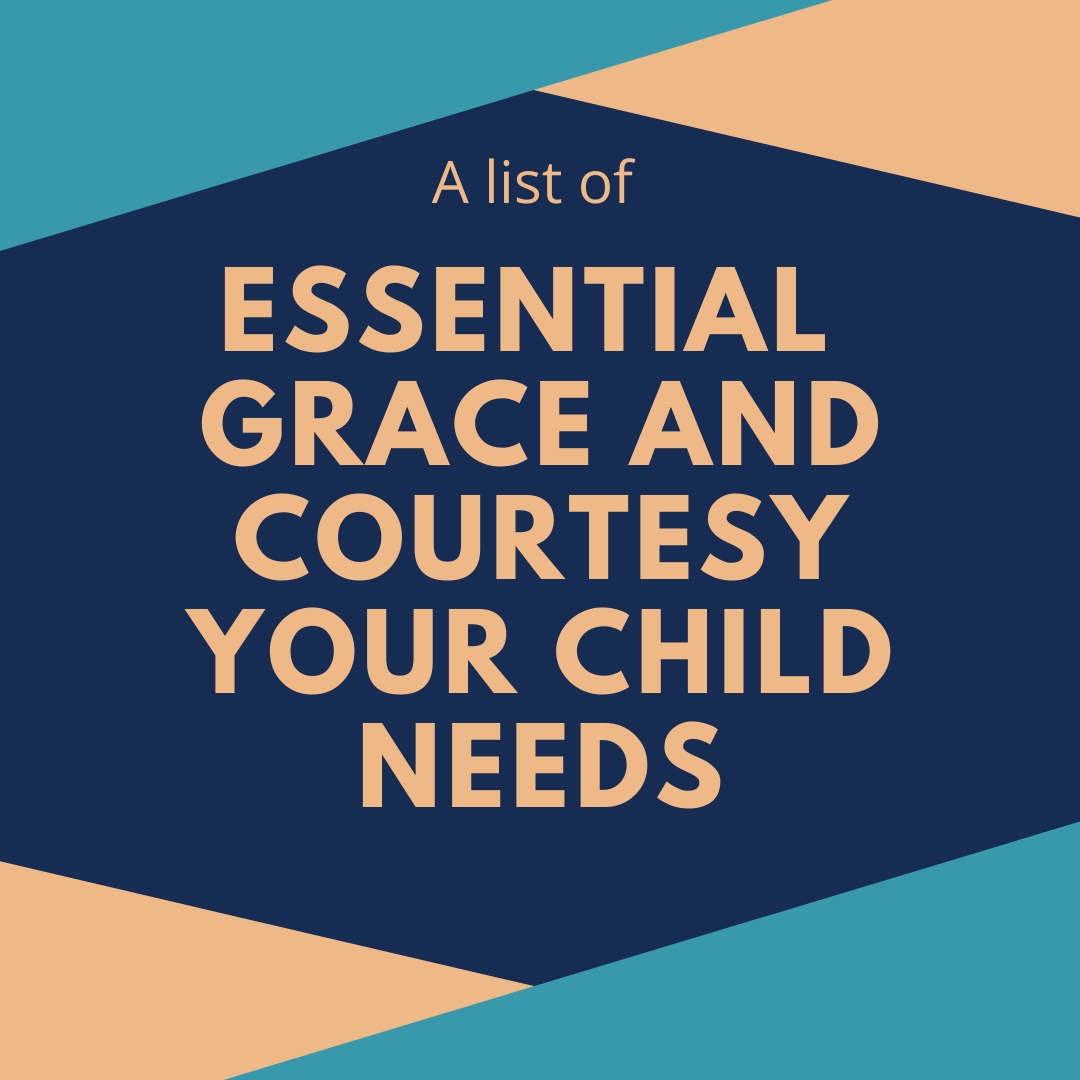
Essential Grace and Courtesy Your Child Needs
Share
There is no uniform list despite what many Montessorians may tell you.
It is common to find Montessori articles and teaching that show Grace and Courtesy as being monolithic and centered around traditional western ideals. One such article is Mary Lou Cobb's where she actively advocates handshakes over fist bumps and tells that all children in her school are taught eye contact is needed when greeting someone.
Joen Bettmann (2003) gives a set of Grace and Courtesy lessons with no prefacing that the lessons need to cater to cultural or ability differences of the children in the centre. The long list includes lessons to be given to the child such as:
- Introducing an adult (using a title)
- Using a napkin
- Blowing one’s nose
Interestingly Betmann says "Grace and Courtesy exercises work as “lubricants” to help the children be comfortable and natural with others and with themselves. We offer these exercises for life so that the children grow into individuals who are poised, natural, and authentic." (Montessori Australia, 2003, p.6) One has to wonder though how an autistic child feels natural when they are made to make eye contact or when a child with dyspraxia feels when they carry the chair wrong.
Children live in different countries, cultures, and have different abilities.
A western classist, ableist view of grace and courtesy e.g. shaking hands, eye contact, "polite words," listening by looking at the speaker and so on is not universal.
Examples of different types of Grace & Courtesy:
- In Deaf culture to get attention people may wave or tap the shoulder lightly and then wait for the person to look.
- In some Indigenous cultures eye contact to elders is rude.
- Some people with disabilities listen best when they can move their bodies.
- Some cultures have specific rules about shoe wearing inside a building.
I don't have all the answers and I am still learning but I do know that we need to be inclusive and affirming in what we teach.
We can ask the children for how they show they are listening.
We can teach that there are different ways of doing things and not all people in our classroom or community do things the same way and that this is okay.
We can model respect for others by asking the children to show how they do something and respectfully enquire why they do it that way.
---
Pin it for later:
